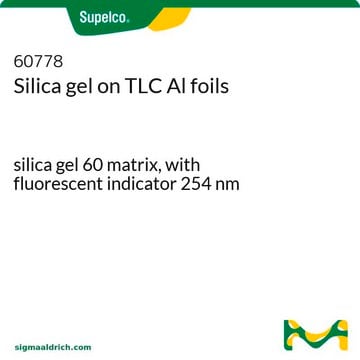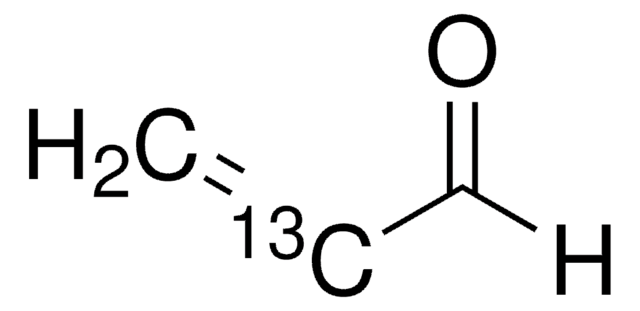64409
Propionaldehyde
analytical standard
Synonim(y):
Propanal
About This Item
Polecane produkty
klasa czystości
analytical standard
Poziom jakości
gęstość pary
2 (vs air)
ciśnienie pary
18.77 psi ( 55 °C)
4.89 psi ( 20 °C)
Próba
≥98.0% (GC)
temp. samozapłonu
404 °F
okres trwałości
limited shelf life, expiry date on the label
granice wybuchowości
17 %, 26 °F
2.6 %, 31 °F
metody
HPLC: suitable
gas chromatography (GC): suitable
współczynnik refrakcji
n20/D 1.360-1.365
n20/D 1.362 (lit.)
tw
46-50 °C (lit.)
mp
−81 °C (lit.)
gęstość
0.805 g/mL at 25 °C (lit.)
Zastosowanie
cleaning products
cosmetics
flavors and fragrances
food and beverages
personal care
format
neat
ciąg SMILES
[H]C(=O)CC
InChI
1S/C3H6O/c1-2-3-4/h3H,2H2,1H3
Klucz InChI
NBBJYMSMWIIQGU-UHFFFAOYSA-N
Szukasz podobnych produktów? Odwiedź Przewodnik dotyczący porównywania produktów
Powiązane kategorie
Opis ogólny
Find all available reference materials for compounds listed in 10/2011 here
Zastosowanie
- Food products and cosmetics using gas-chromatography with photo ionization detection (GC-PID).
- Infant formulas using gas chromatography with flame ionization detection (GC-FID).
- Household products using gas chromatography coupled to mass spectrometry (GC-MS).
Hasło ostrzegawcze
Danger
Zwroty wskazujące rodzaj zagrożenia
Zwroty wskazujące środki ostrożności
Klasyfikacja zagrożeń
Acute Tox. 4 Inhalation - Acute Tox. 4 Oral - Eye Dam. 1 - Flam. Liq. 2 - Skin Irrit. 2 - STOT SE 3
Organy docelowe
Respiratory system
Kod klasy składowania
3 - Flammable liquids
Klasa zagrożenia wodnego (WGK)
WGK 1
Temperatura zapłonu (°F)
-22.0 °F - closed cup
Temperatura zapłonu (°C)
-30 °C - closed cup
Choose from one of the most recent versions:
Masz już ten produkt?
Dokumenty związane z niedawno zakupionymi produktami zostały zamieszczone w Bibliotece dokumentów.
Klienci oglądali również te produkty
Protokoły
-Tolualdehyde; Valeraldehyde; Isovaleraldehyde
Nasz zespół naukowców ma doświadczenie we wszystkich obszarach badań, w tym w naukach przyrodniczych, materiałoznawstwie, syntezie chemicznej, chromatografii, analityce i wielu innych dziedzinach.
Skontaktuj się z zespołem ds. pomocy technicznej












